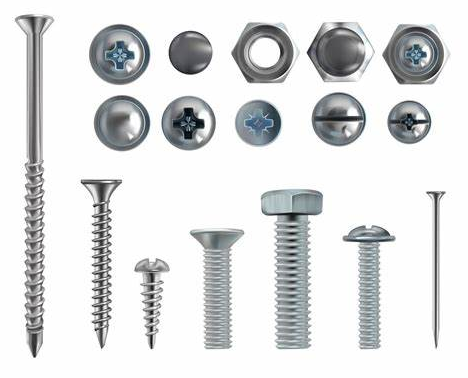
Machine threads (as opposed to wood-screw threads, etc) come in several different standards, the most popular are metric M (most of the world) and UNC/UNF (USA mostly). There are many variants of these, as the thread has two different characteristics, the thread diameter and the pitch – how far apart the tips of the thread is. So UNC is “coarse” thread or “normal pitch”, UNF is “fine pitch”. A thread may be 1/4″-18, which means 1/4″ major diameter and 18 threads per inch.
The metric variant doesn’t have separate coarse and fine standards, instead the thread is specified as “M10 x 1.5” or “M10 x 1.0”. The first one is a normal, the second classed as fine, but they both follow the same norm.
There’s British standards of BA and Whitworth (one of the very first thread standards).
All of the above are “triangular threads”, meaning that if you look at the thread cut lengthwise through the middle of the screw or bolt, the profile is a triangle with both slopes the same.
Beyond that, there’s lots of special standards. ACME thread, where the thread profile is trapezoidal – like a very tall triangle that has had the top taken off, so it’s almost like a square. This is often used for “feed screws” in machines, in clamps, lifting equipment (like the jack that you use to lift the car to fix a puncture).
There are also unequal triangles – the triangle shape is tilted, so one side is almost vertical, and the other slopes at for example 45 degrees.
Metal screws are also made from a vast range of materials. Brass and bronze, usually because they look nice, but in model making because it’s easy to machine. Steel is very common, stainless steel where rust may be an issue. Aluminium screws are used for light-weight. Steel screws also come in a variety of steel grades – regular mild steel is the most common, but high tensile and hardened steel do happen.


